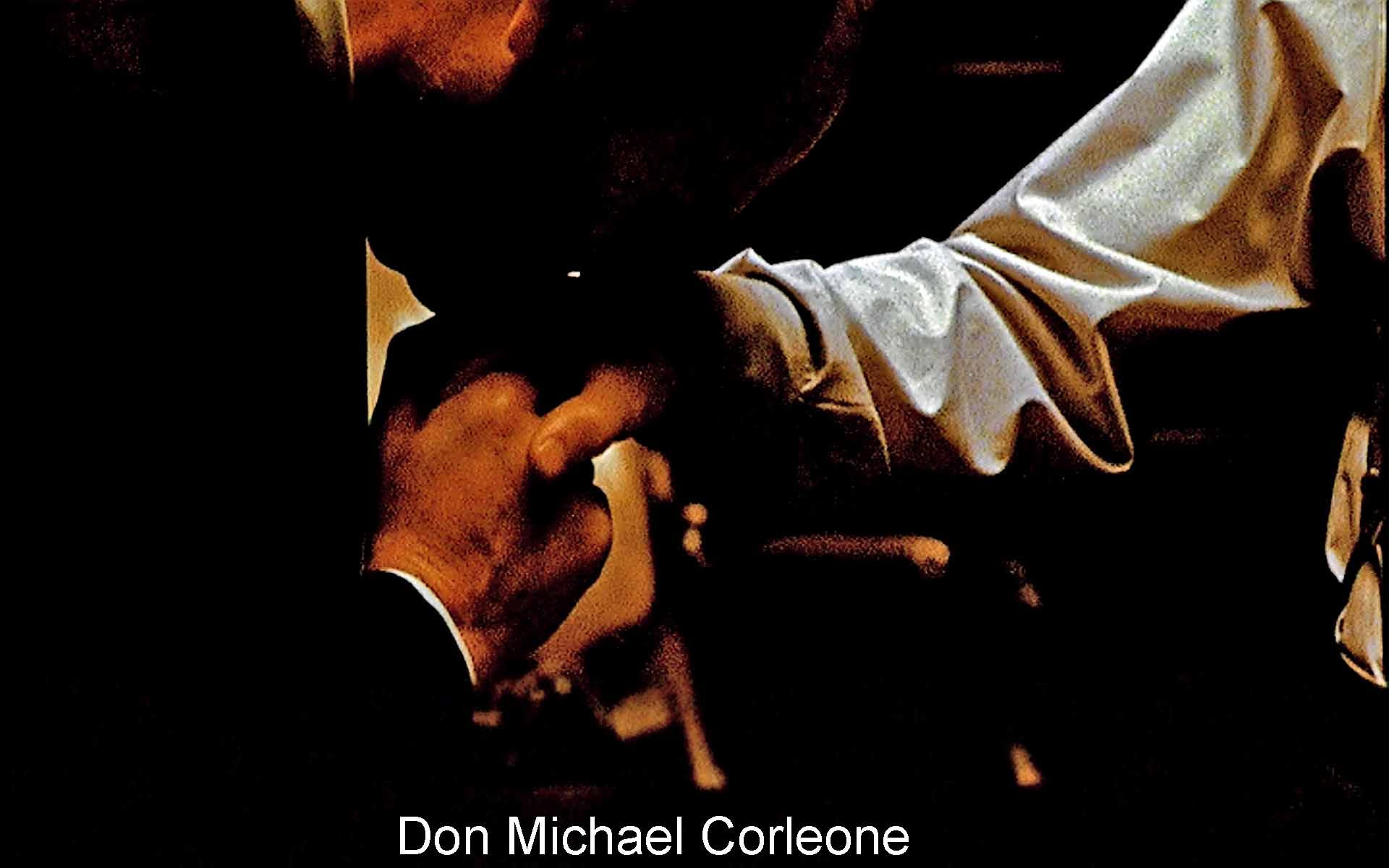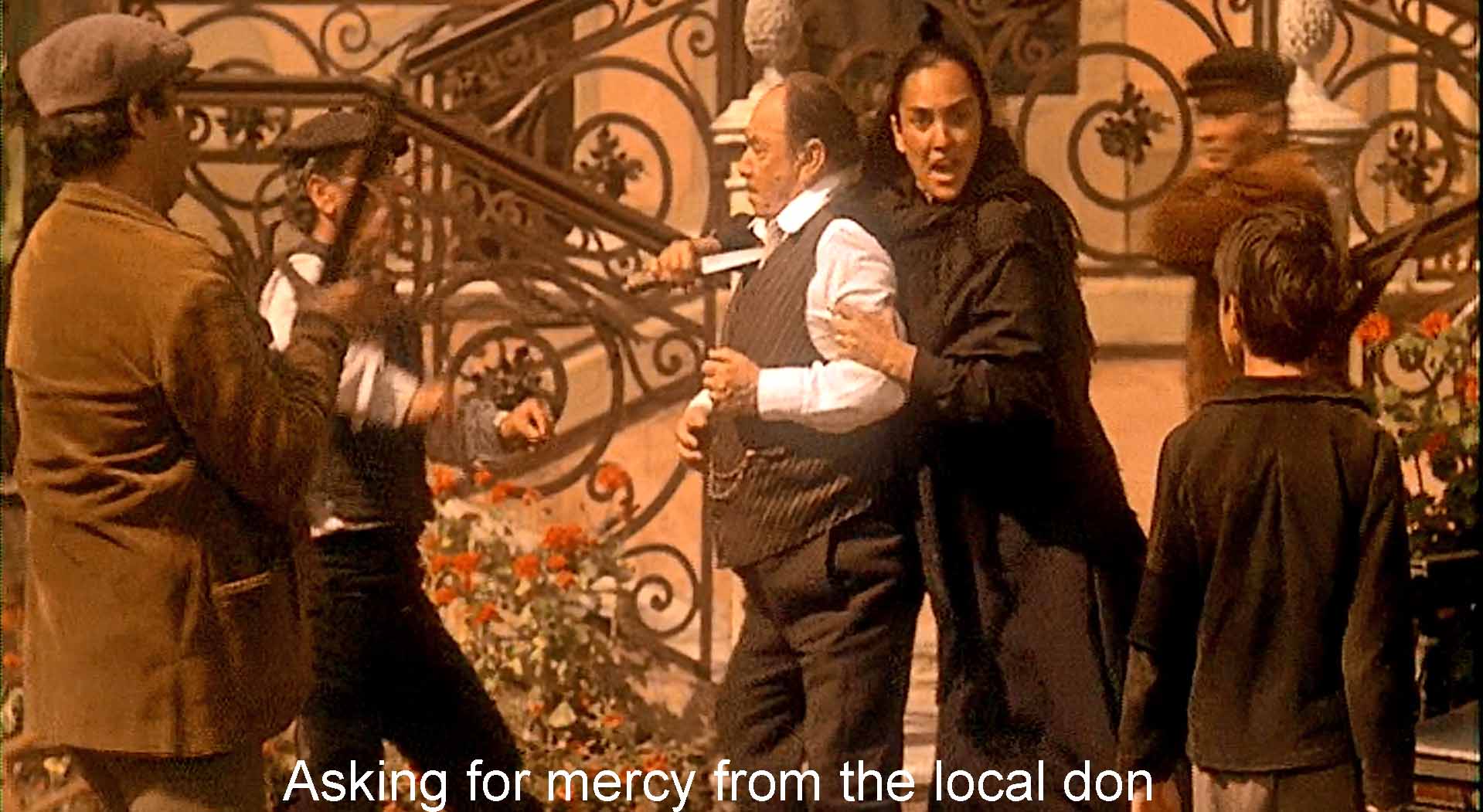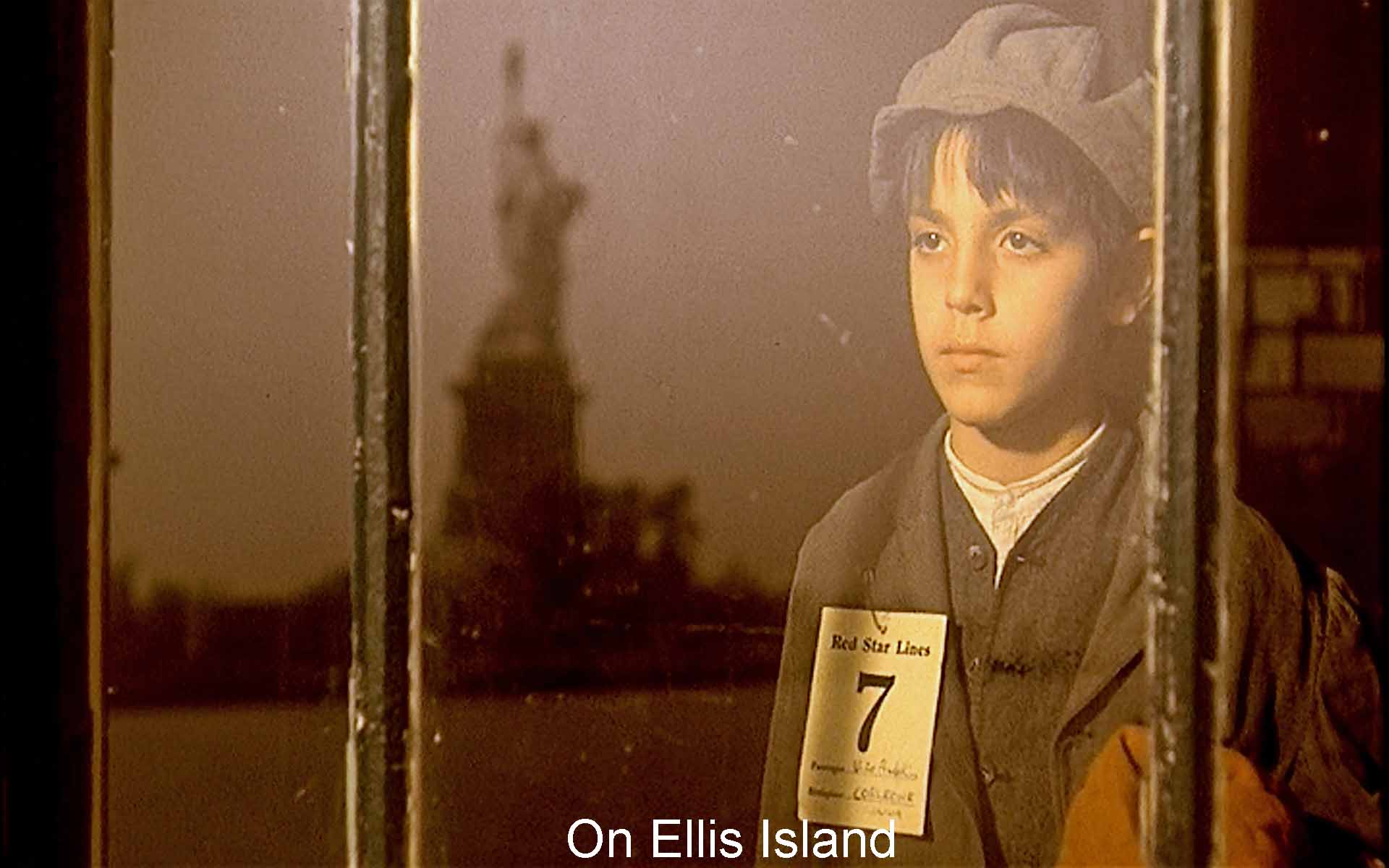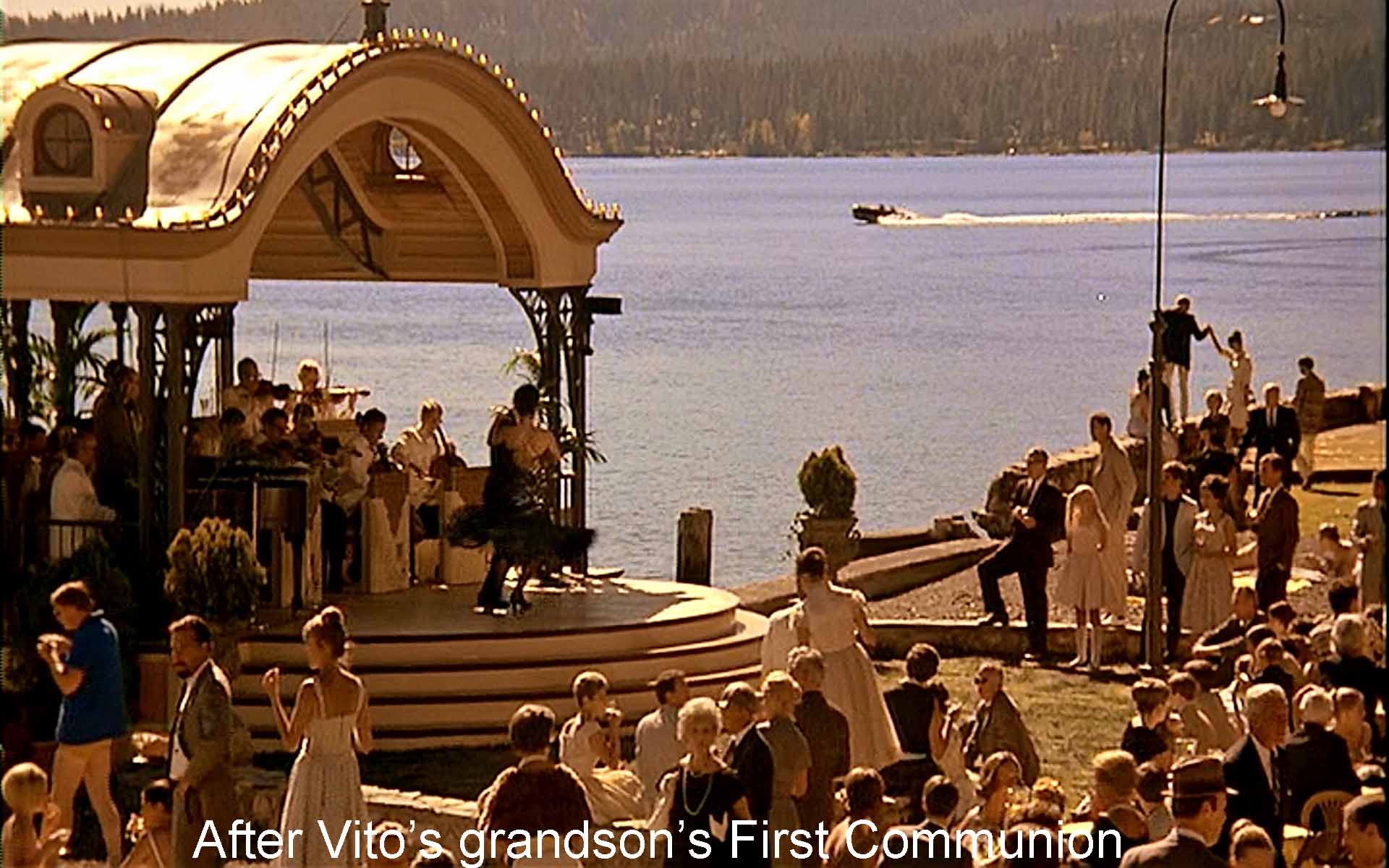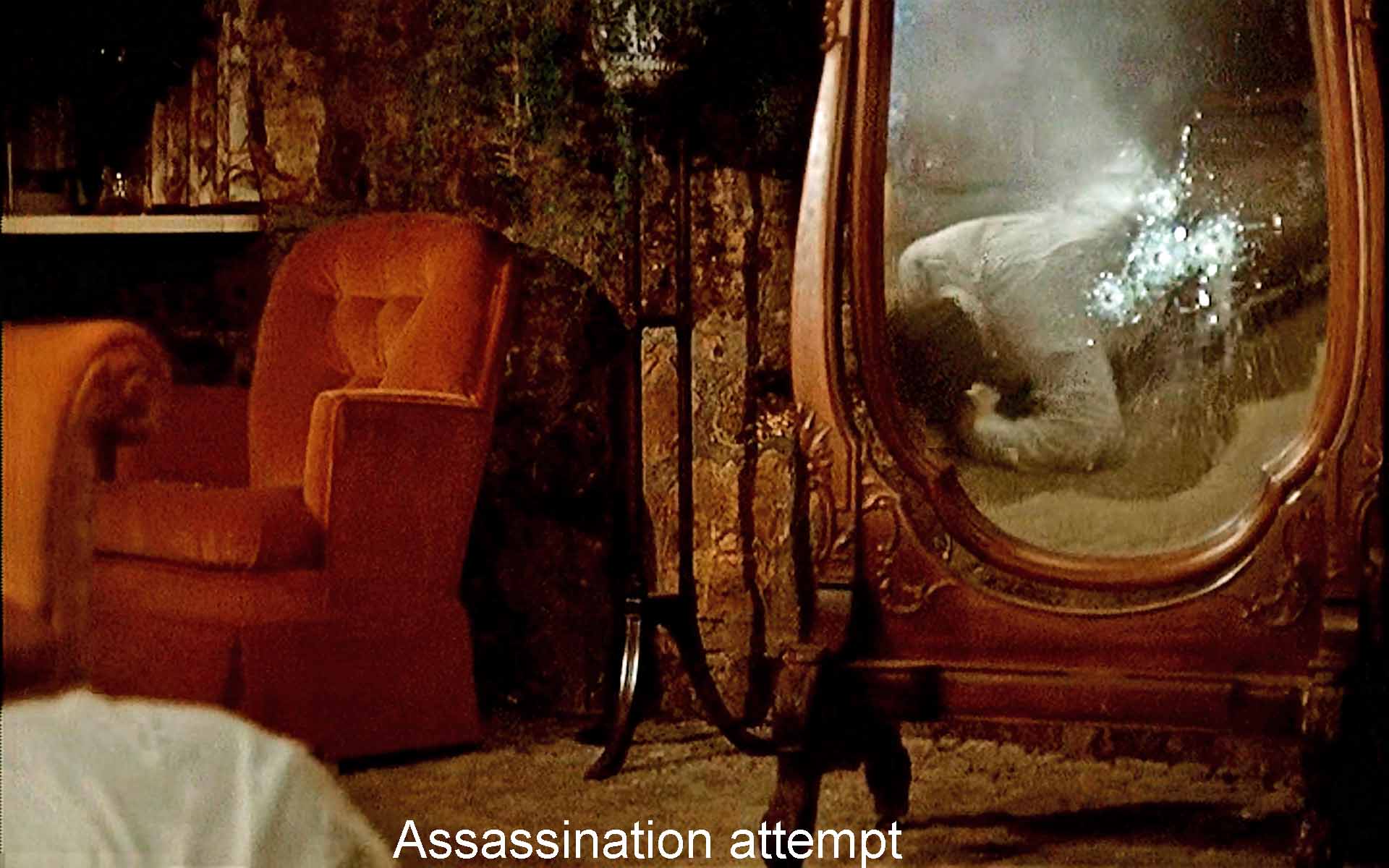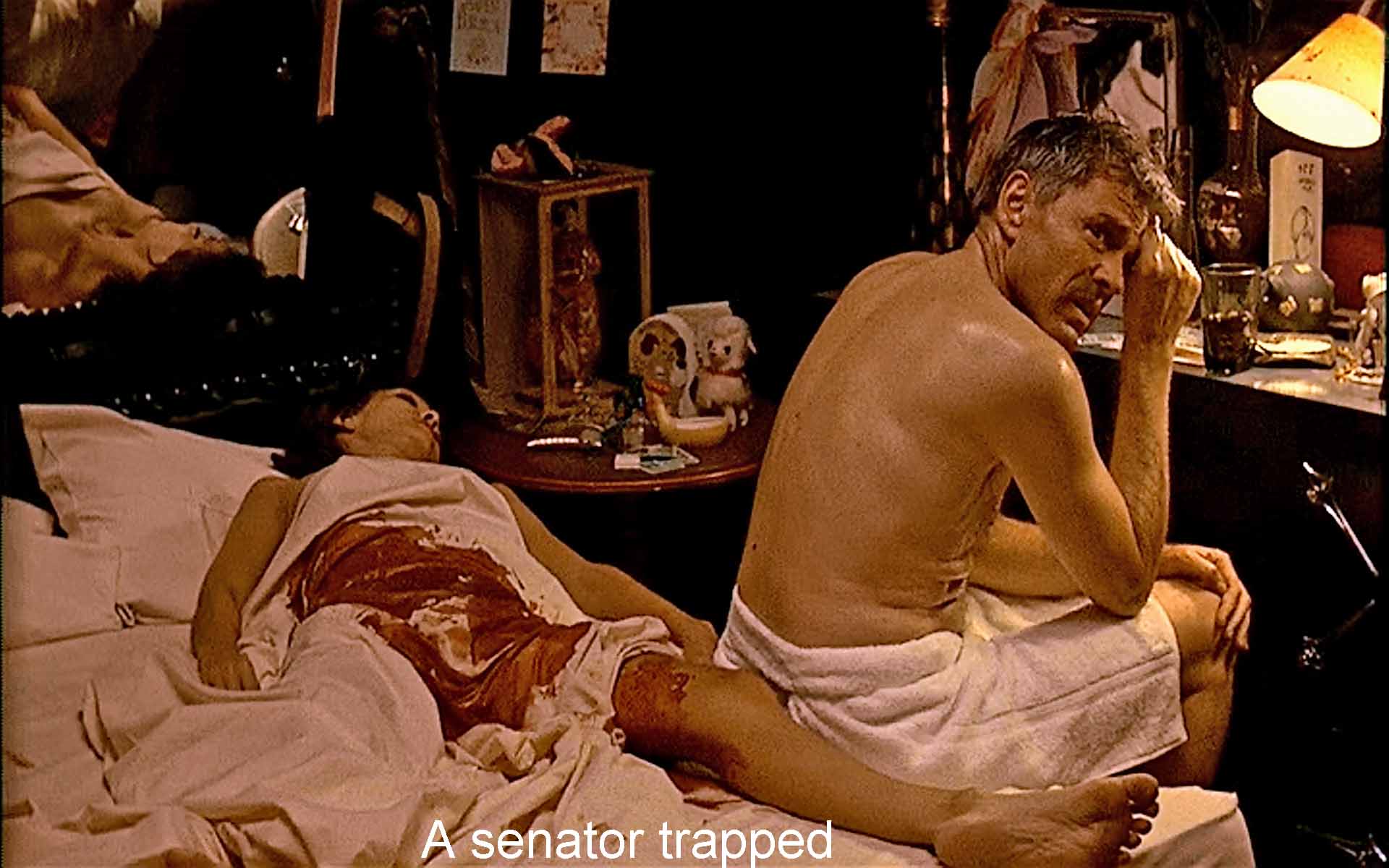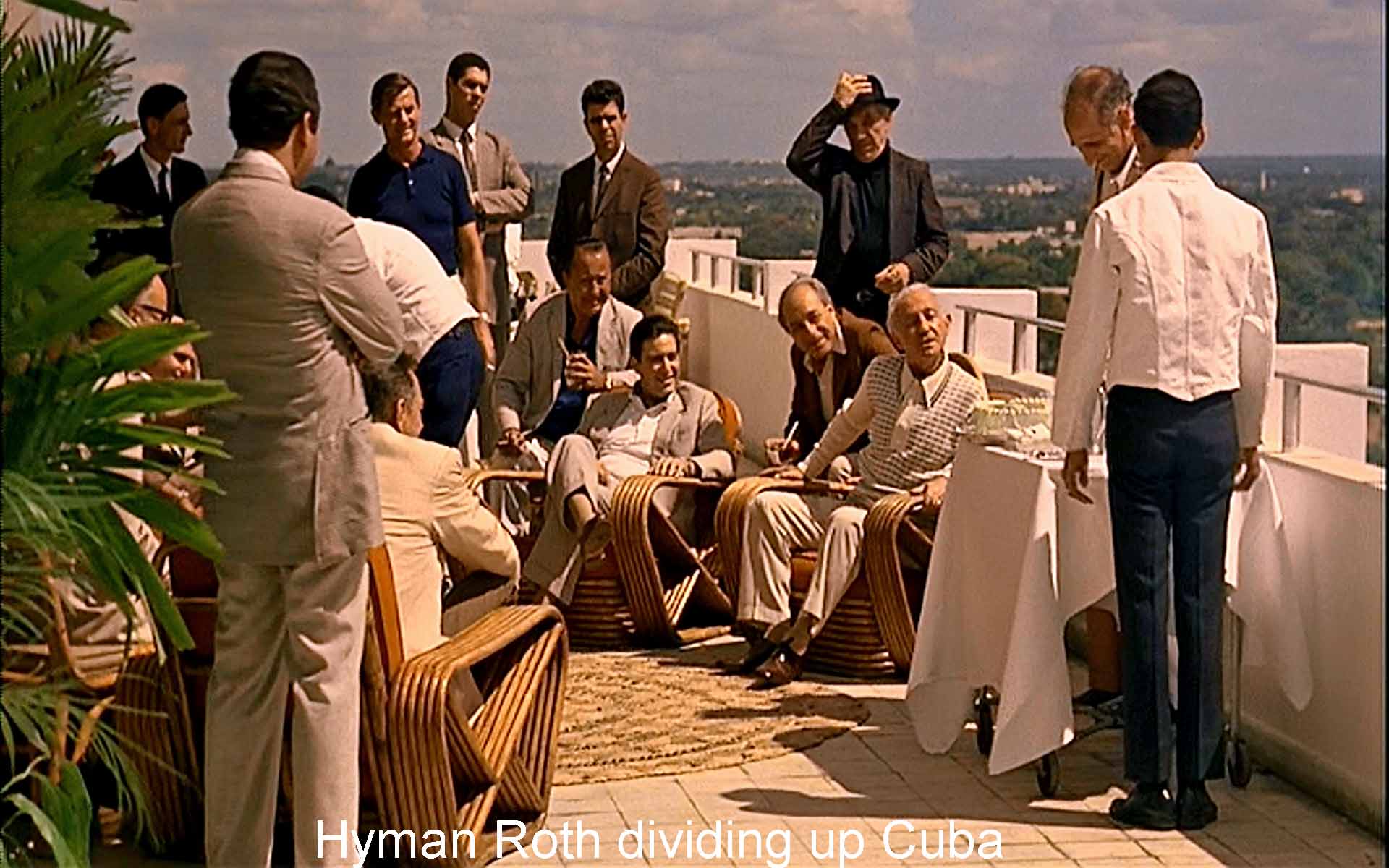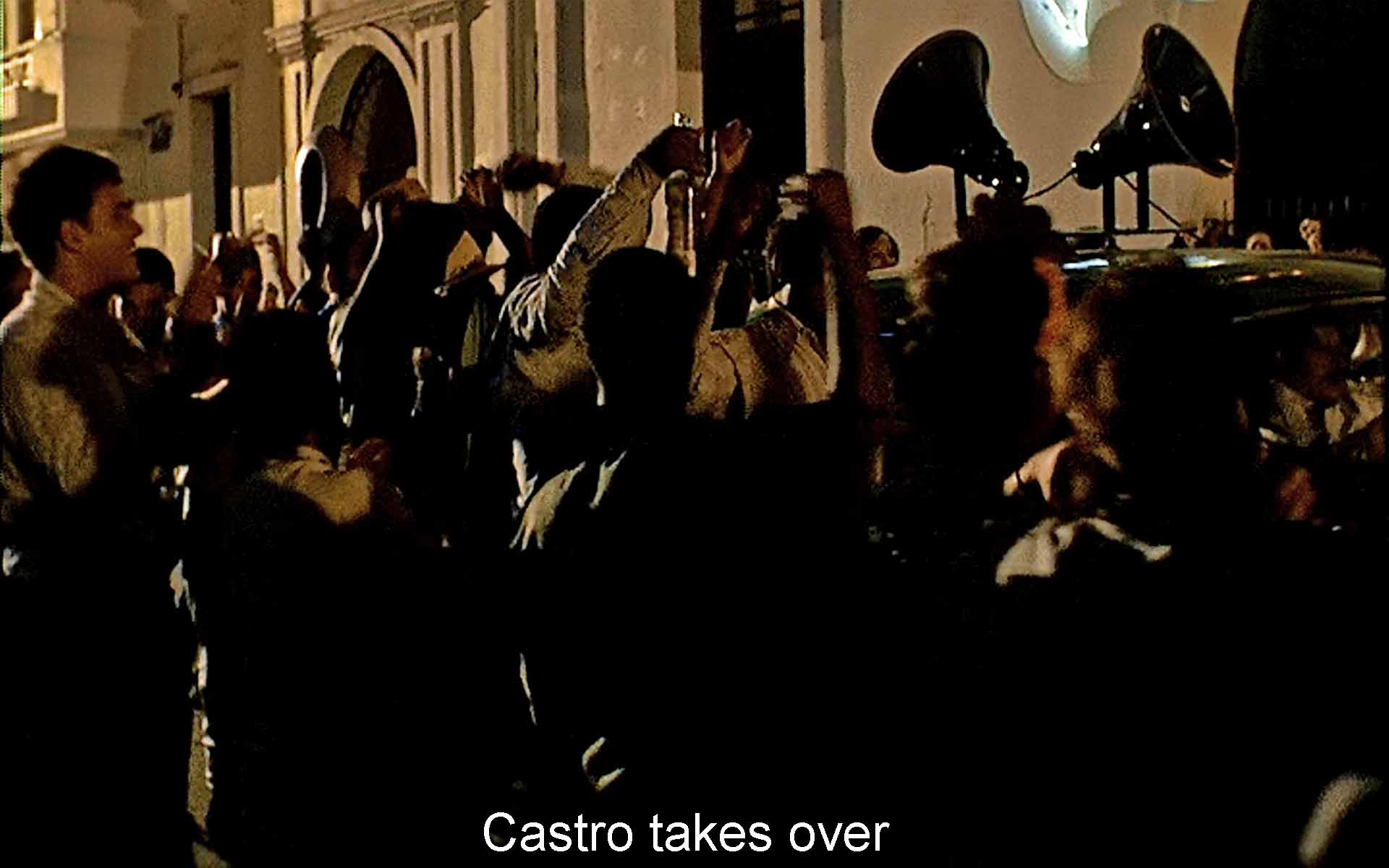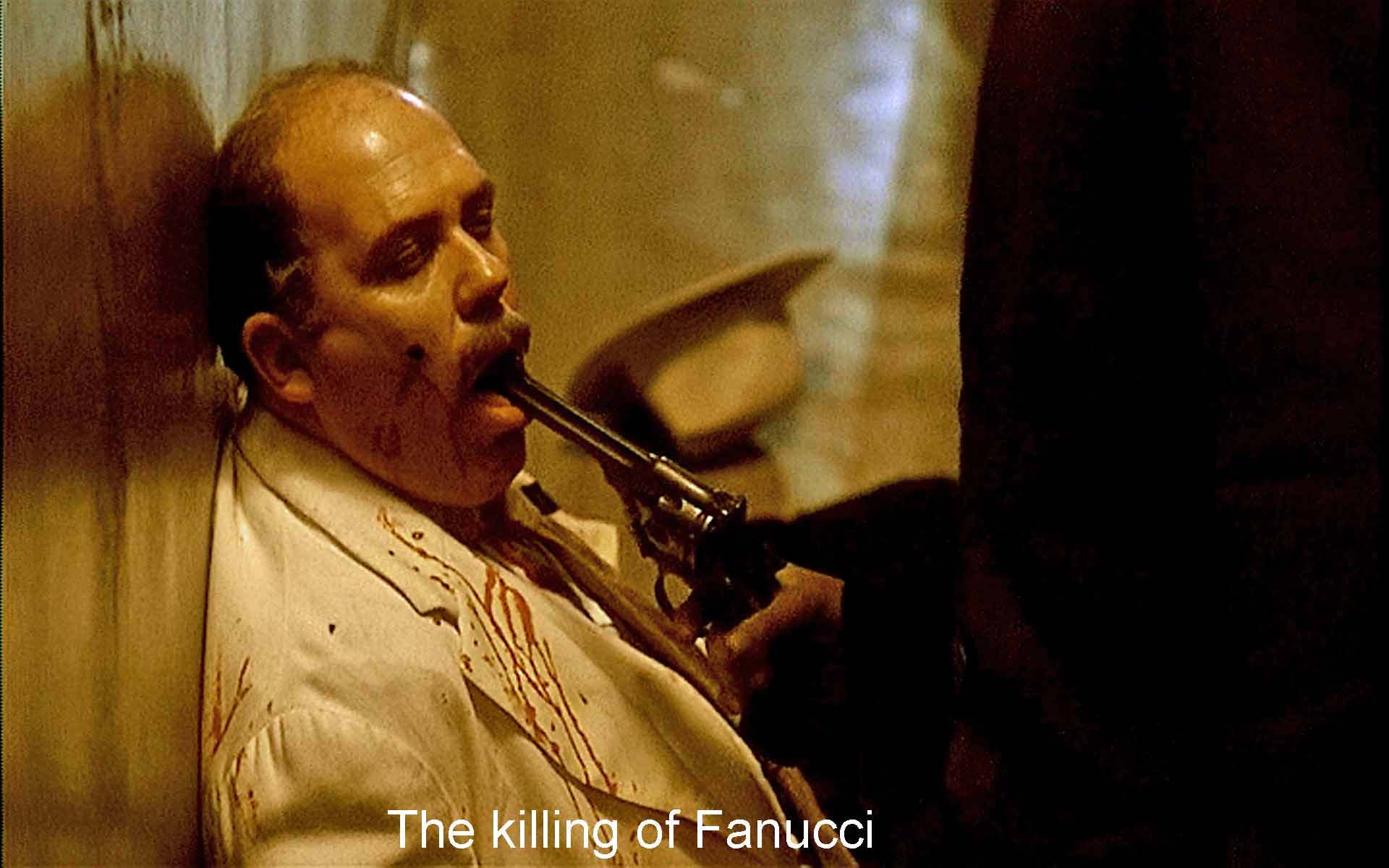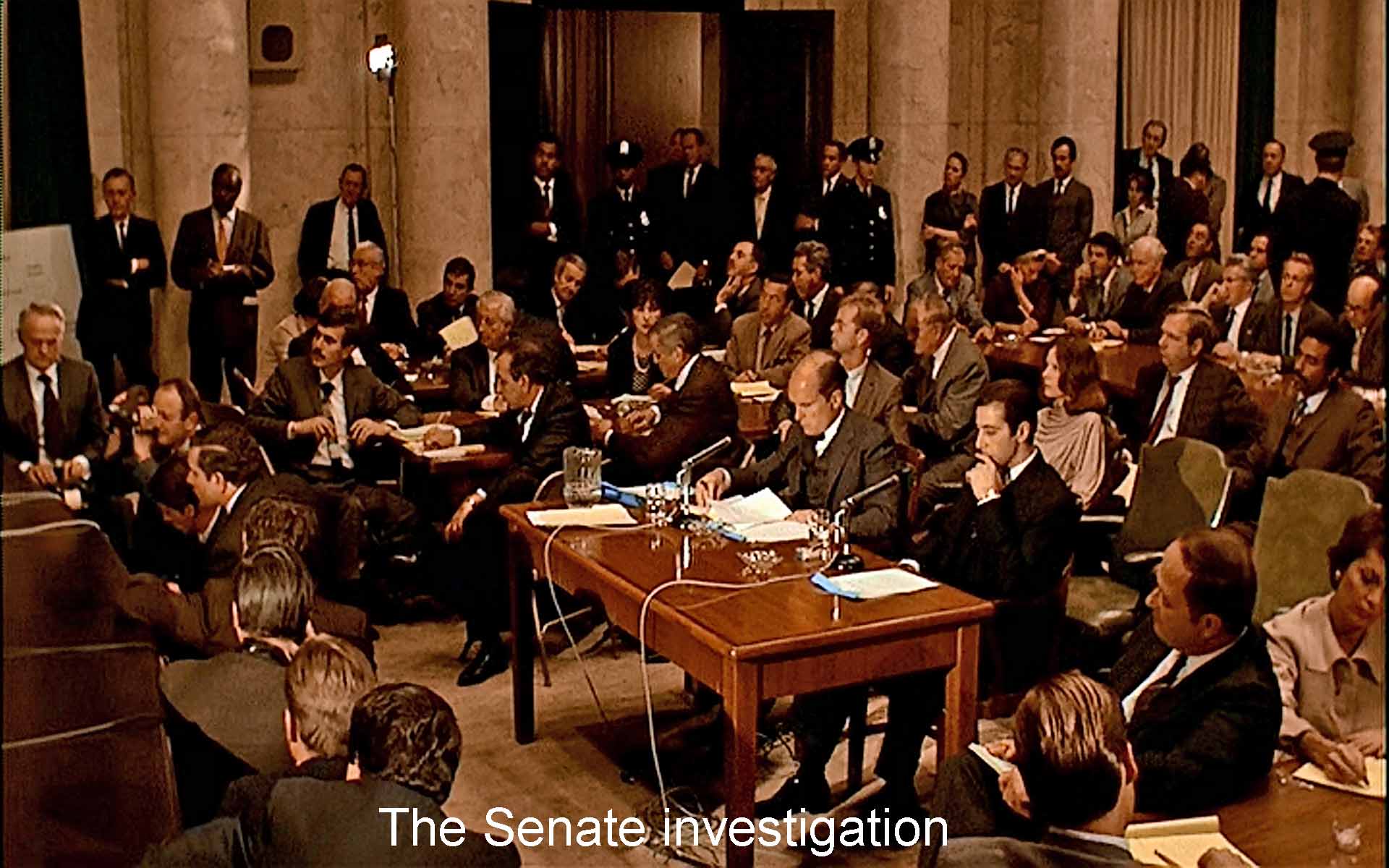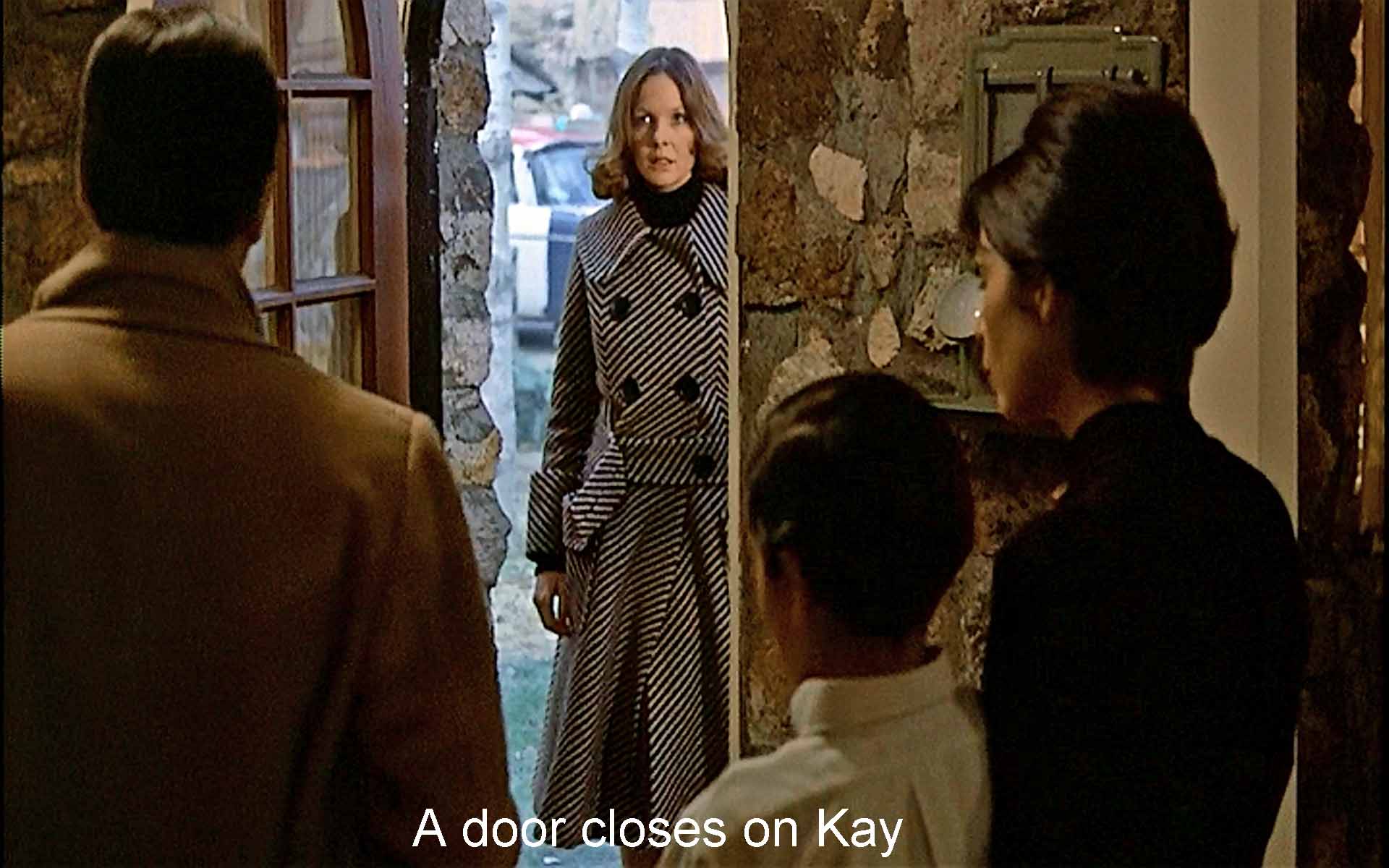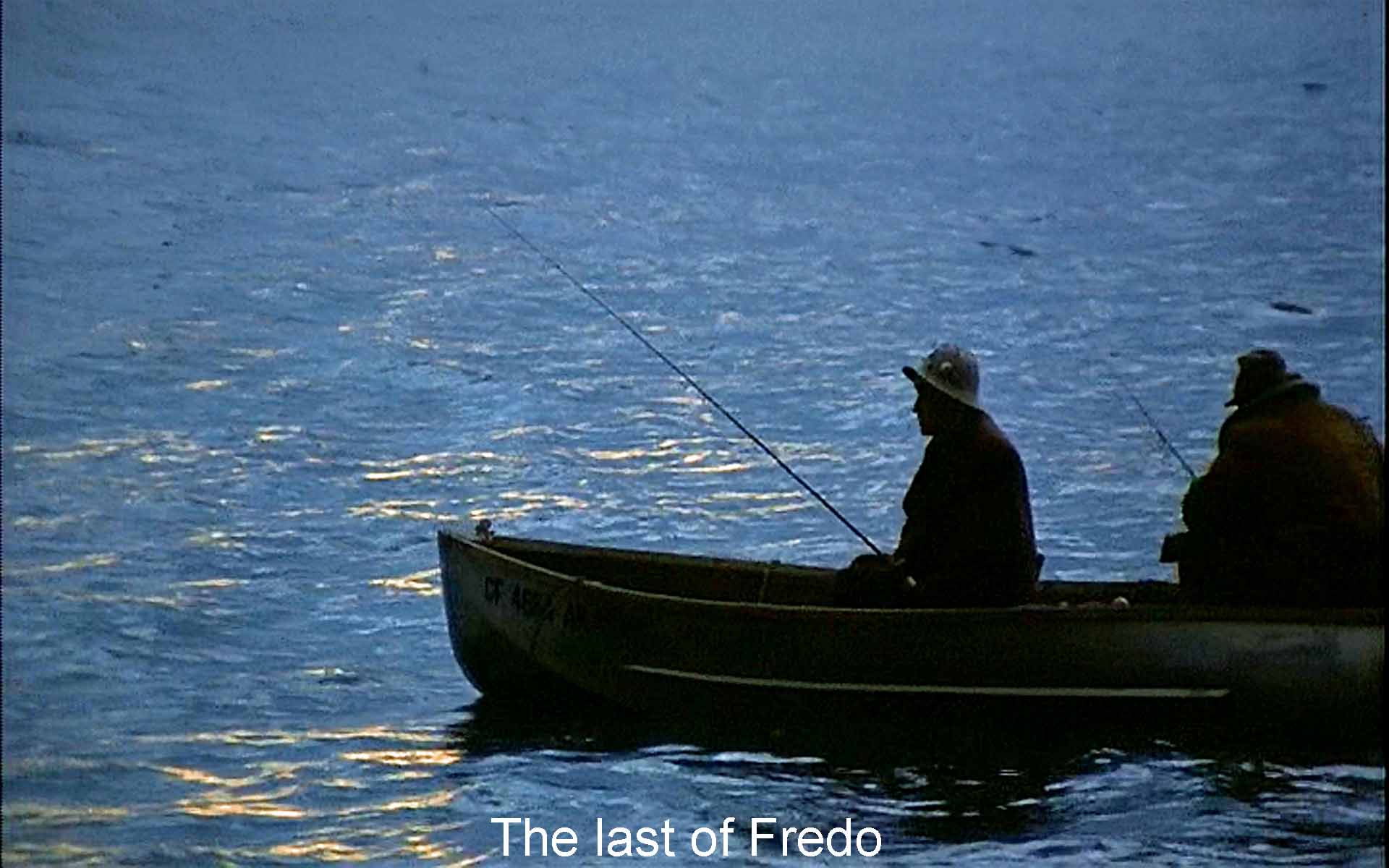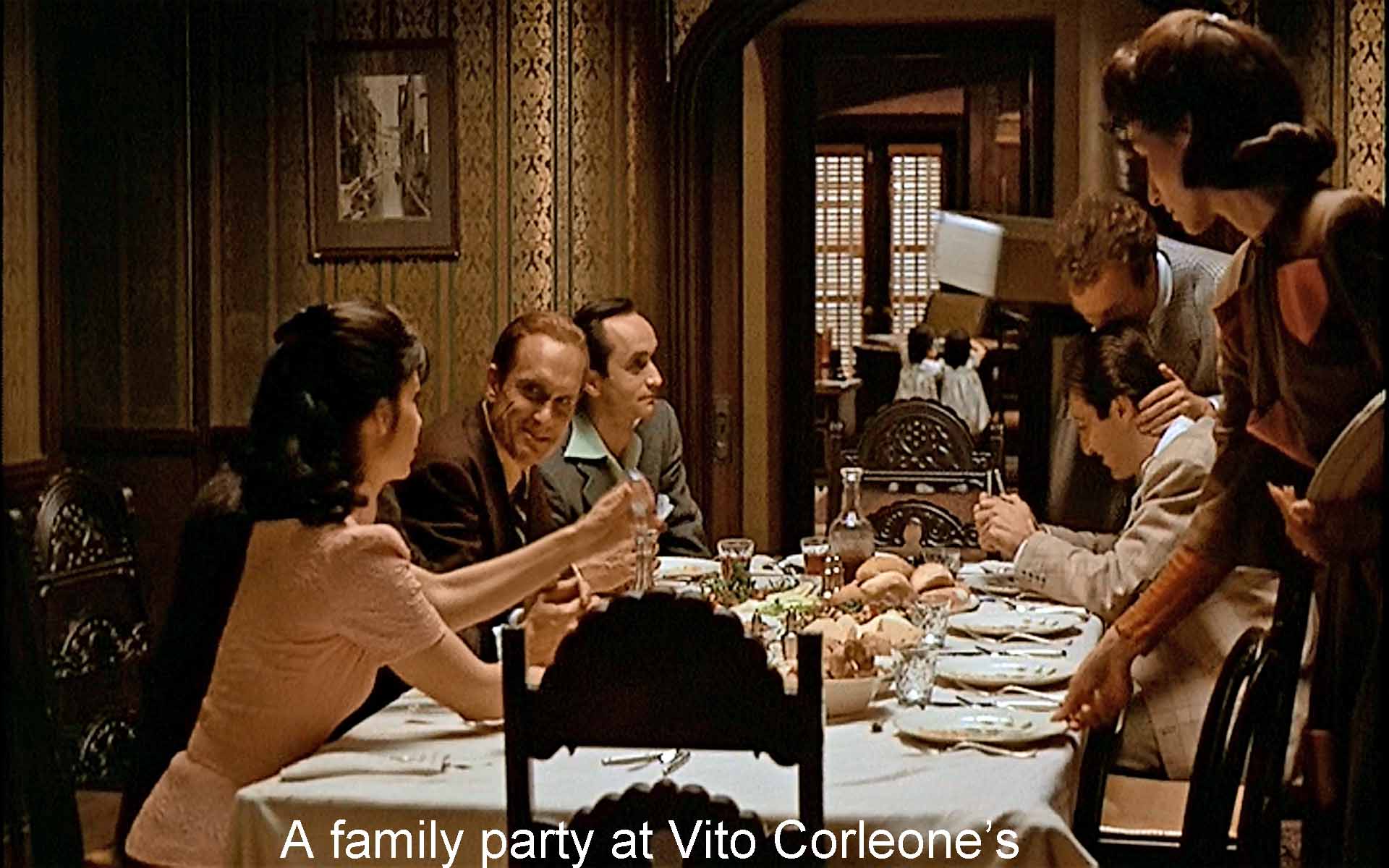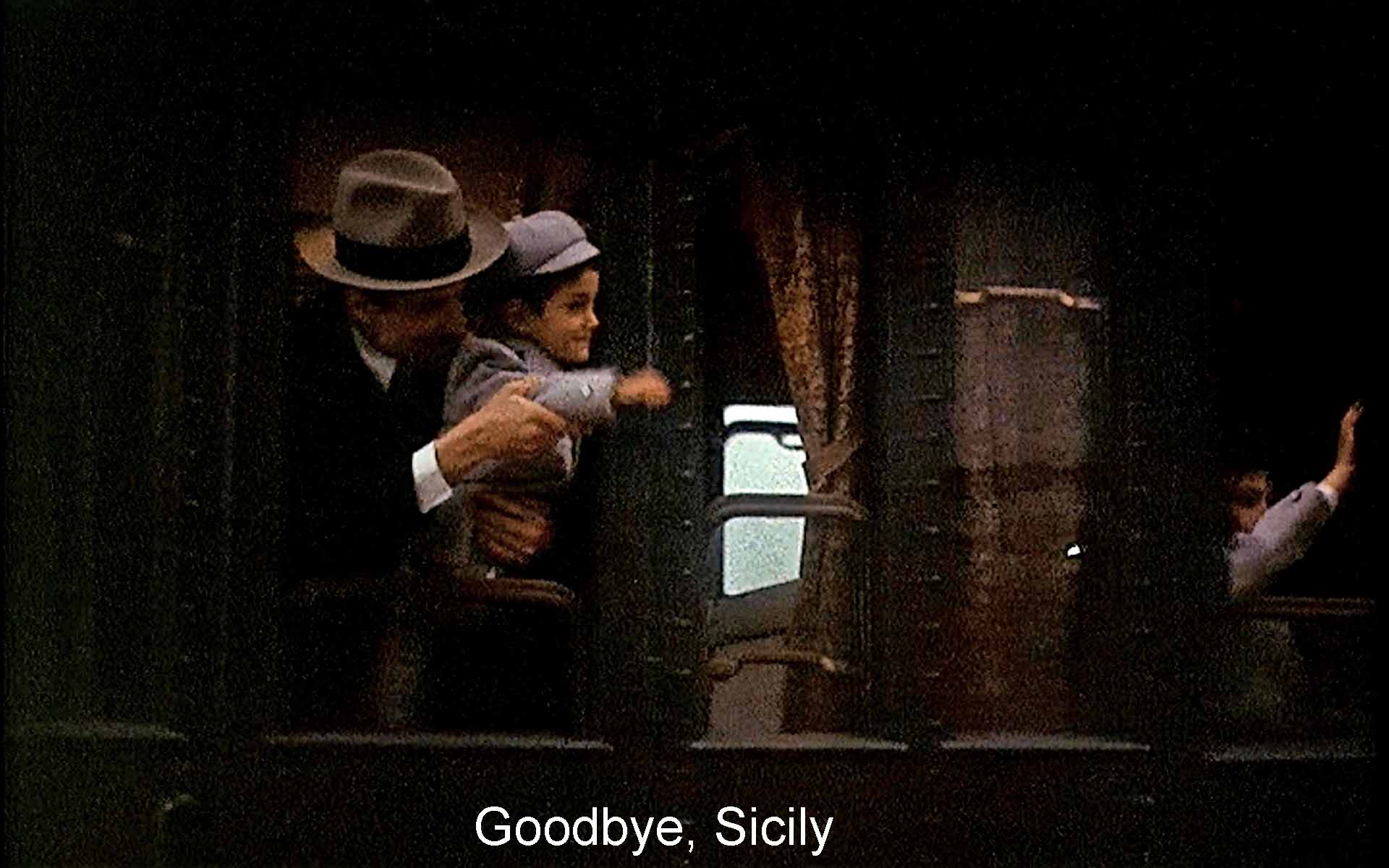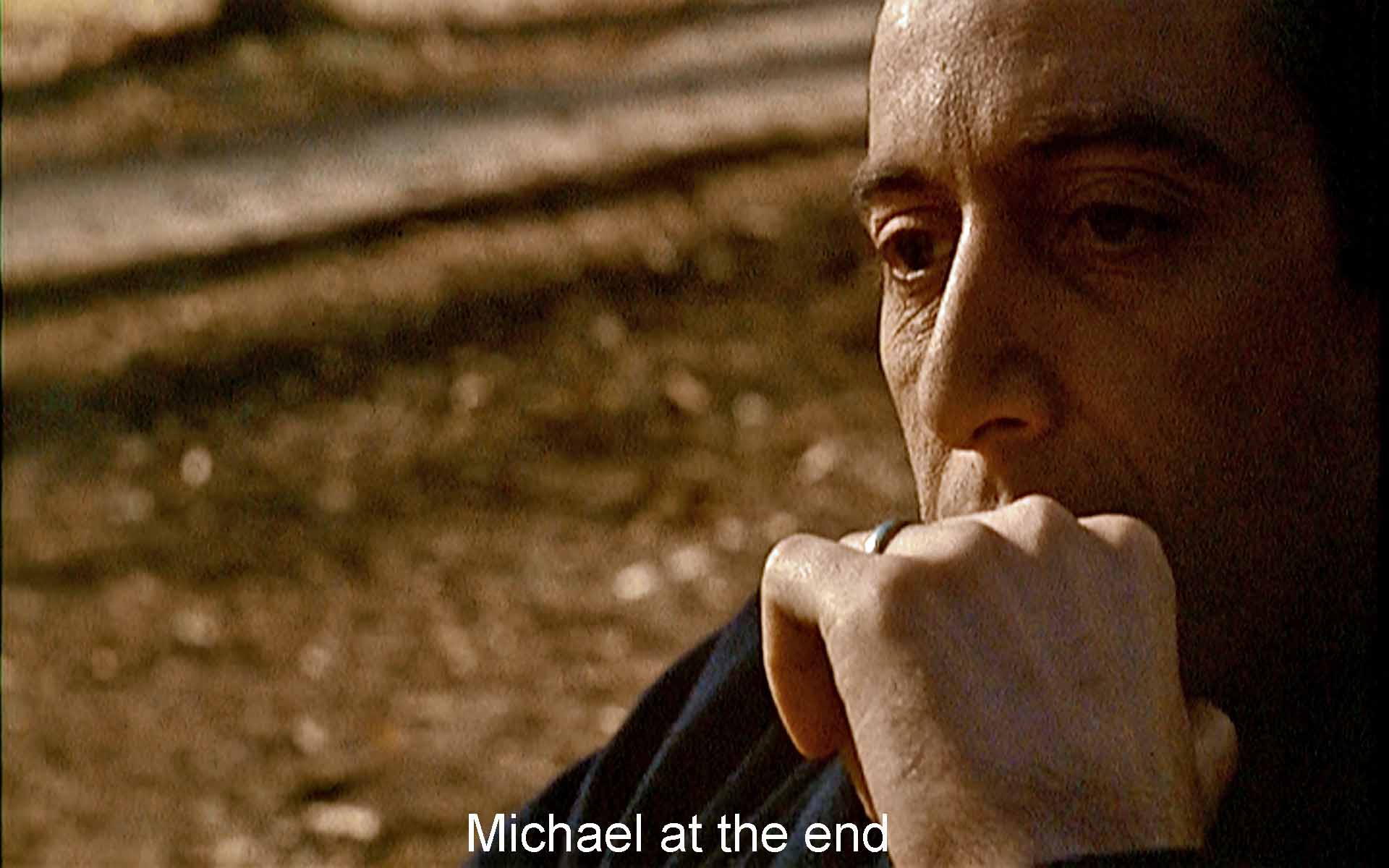Three hours and twenty minutes—this film is a sequel to end all sequels. Nowadays, in the 2000-teens a sequel means that Hollywood is mining one or another of its franchises based on comic books or young adult adventures or tv series. Bo-o-o-ring! This is a sequel that adds to its predecessor. The first Godfather arrived at a solution for the entrepreneur, criminal or not: you keep your business family and your family family separate. The closing door of the final scene, shutting Don Michael Corleone’s wife Kay out of her husband’s office said it all. The Godfather, Part II, as I read it, says that doesn’t work. The “business” invariably affects the family.
Families fascinate Coppola. He sees even the murderous Corleones as, above all, a family. This film has major episodes involving the young Vito Corleone, his mother, father, and brother, and Vito’s children, Connie, Fredo, even the deceased Sonny and of course Michael, the focus of all three Godfathers, and his wife and children. And Coppola includes his own family. Having his father write some of the music for this film, alongside the famous Nino Rota, breathed life into the thwarted career of Carmine Coppola. Talia Shire (playing Connie Corleone) is his sister. His daughter Sofia, his son Roman, his mother Italia, and his uncle Louie all served as extras or bit players.
The Godfather, Part II has two counterpointed plots dealing with two stages in the same family about forty years, one generation, apart. One plot deals with Vito Corleone’s development within Italian and Italian-American communities in the early 1900s. The other shows his son Michael in America in the late ‘50s. One plot we could call the rise of Vito Corleone (Robert DeNiro), the other the fall of Michael Corleone (Al Pacino). And both plots have many, many episodes, three hours and twenty minutes’ worth. This is an extremely complex film that responds to the time-tested method of looking at the opening and closing.
The opening extends through a series of episodes. A brief opening shot (before the credits) shows Michael (Al Pacino) as the Godfather having his hand kissed by one of his caporegimi, the next level down in the “family.” After the credits, we see Michael’s mother leading the boy Vito, nine years old (played by Coppola’s son Roman), in the funeral procession for his father. The local Mafia boss Don Ciccio had killed the father, and he now kills Vito’s older brother and his mother. Vito escapes to Ellis Island, where he is renamed Vito Corleone. The sequence ends with a famous shot that shows the nine-year-old boy staring out a window at the Statue of Liberty while he softly sings a hymn. Coppola has established what he will treat as Sicilian values, the guiding principles of the young Vito Corleone: murder and religion. This opener establishes a pattern: Michael—Sicily—America.
Cut—and this is an instance of Coppola’s genius at cross-cutting—cut to another boy. We see the lavish First Communion of Vito’s grandson, Michael’s son Anthony. A lavish party follows, people sitting around talking and drinking and ballroom dancing, very different from the exuberantly ethnic party of the first Godfather. Then we see Michael’s study and sleazy negotiations for a gambling license with a corrupt and bigoted U.S. senator. These are the American version of Sicilian values: religion, “being strong for one’s family,” but above all, money and profit with murder and extortion as needed.
The ending also has three parts, and they mirror the opening pattern: America - Sicily - Michael.
America: the four brothers and Connie (and her soon-to-be husband) are gathered round the dinner table waiting for Vito’s return to a surprise party. It is a strong family scene focused on the four brothers with Sonny at the head of the table. Michael announces that he has joined the Marines—this is post-Pearl Harbor. Sonny (James Caan) furiously and Tom Hagen (Robert Duvall) more quietly remind him of their father’s Sicilian values and how in the Italian manner he had gotten Michael a deferment. Michael persists in his push toward being patriotically American, hinting that he has different plans for his future than his father’s. He is left alone at the table as the others welcome Vito home.
Sicily: Coppola cuts to the Vito Corleone family leaving after their visit when young Vito (now grown up into Robert De Niro) exacted his revenge, disembowelling Don Ciccio. The boy Michael waves goodbye from the train window. Vito will preserve in America the Sicilian culture he lives by.
Michael: The final shot shows Michael terribly alone in Nevada. The other blood brothers are dead, Connie and Tom dismissed. Michael’s devotion to profit-at-any-cost, to “business” on the American model, has cost him his family and the warmth and friendship of the Sicilian lifestyle. Coppola has asserted at the beginning and end of the film a major theme: the conversion of Sicilian ways into American. Too, that final shot reminds me of a poignant scene earlier. Michael is returning from “business” in Cuba. He asks his mother what his father thought: “By being strong for his family—could he—lose it?” “You can never lose your family,” replies his mother. And Michael dryly says, “Times are changing.” By the end he has indeed changed.
In these first two Godfather films, Coppola demonstrates his mastery of cross-cutting or montage (the combining of shots). Cross-cutting dates from the earliest days of film. “Meanwhile, back at the farm . . . ” By combining two scenes a director could show events taking place simultaneously at different locations, say, a train being robbed and a telegraph operator miles away keying to get help.
The great Russian director Sergei Eisenstein (1898-1948) expanded the technique of montage to enrich a viewer’s experience. A famous example: in his masterpiece, Battleship Potemkin (1925), he spliced together three shots of marble lions, first crouching, then rising, then roaring. The effect made it look as though one stone lion was rising in anger or, as Eisenstein put it, “Even the stones speak.” But this was not part of the action. Rather, reading it against other shots of mobs storming a palace, one could interpret this “irrelevant” shot of stone lions as a comment on other shots of the proletariat rising against the czarist tyranny, strength, fierceness, anger.
Coppola’s mastery of montage consists in his choosing shots that will serve both the simultaneous and the metaphorical functions of montage. The most famous example is the baptism scene in the first Godfather. We see Michael solemnly renouncing the devil and all his works at the same time that his buttonmen are murdering the heads of the Five Families. In terms of plot the baptism provides him his alibi, but we can also see very literally the hypocrisy and the evil of what Michael is doing.
Coppola continues these double-valued montages in Godfather, Part II, notably contrasting Michael’s or simply the modern, corrupted version of Sicilian values with alternatives. There are many examples.
Cut from Michael learning that Kay lost the baby to Vito fretting over a baby with pneumonia. Michael disowns his brother Fredo (John Cazale) for his betrayal—cut to the appearance of Frankie Pentangeli’s brother at the Senate hearing, and Frankie’s perjuring himself to save his brother. The filthy sex show to which Fredo takes the “businessmen” divvying up Cuba cuts to the victory by the purist revolution. Michael and Kay fight furiously over who will keep the children—cut to Vito Corleone and his harmonious family arriving in Sicily and being welcomed. Cut from the nude senator and the murdered prostitute (“It’ll be as if she never existed”) to Kay being held in the compound for her own safety.
Another cross-cutting involves territory. In 1910 Little Italy, boss Don Fanucci squeezes money from his territory, forcing young Vito out of his grocery job. Cut to Michael refusing to help Frank Pentangeli control his territory against rivals sponsored by Hyman Roth.
Vito, preparing to kill Don Fanucci, follows him by walking on the rooftops as Fanucci walks through a religious procession on the street. The camera cuts back and forth between the rooftops and the procession. Coppola continues to photograph the procession after the killing as if to point up (as in the baptism sequence) Vito’s wrongdoing, but also murder as a kind of ritual.
The shooting of Fanucci exactly parallels the religious procession: the firecracker pops below match the gunshots above; the fireworks below match the fire that starts in Vito’s towel; the money he takes from the dead man matches the money being stuck to the image of Jesus. I think Coppola is suggesting that the killing is a ritual like the festival. And Vito has applied a lesson he learned as a child in Sicily, which he will apply all his life and pass on to his son: you solve problems by killing someone.
One could go on in scene after scene to note Coppola’s expressive use of cross-cutting, but in this film he is after bigger game. He doesn’t simply cross-cut from one scene to the next, he cuts from Sicily to America, from Cuba to Nevada, most of all from past to future and from one plot to another. In the ending, we see Vito Corleone leave Sicily with his loving family after his revenge on Don Ciccio. We see Michael sadly alone in his Nevada fortress, one brother dead, one dismissed, one murdered, his wife banished, his children ignored. Coppola built this whole film on cross-cutting.
He also continued, though, what a Shakespearean would call “incidental imagery” that he began in the first Godfather. Fish: a tank of tropical fish on Michael’s return from Cuba when he realizes how he has grown away from his family. Fishing associated with the murder of Fredo. Oranges: Fanucci arrogantly takes an orange, and when he bullies Vito he takes an orange dress from those Vito and his gang have stolen. When Michael returns from Cuba and feels separated from his real family, there is orange upholstery and orange wallpaper. Kay, whom he ignores, is sewing an orange dress (Penelope waiting for Odysseus?). Cut from the orange wallpaper beside Michael to the Senate investigation. (Is orange a dangerous mixing of the black and tan decor throughout the picture?) The big black cars serve the family “business” all over. And thunderous noises precede or accompany the various threats and tragedies facing Michael as they did in The Godfather. Coppola pays meticulous attention to details like the final e in Corleone: the Italians pronounce it; the anglos treat it as silent which it would be in English.
Godfather II introduces a theme less prominent in the first Godfather, the situation of women. They are treated pretty badly in this Godfather. There is the prostitute murdered so the Corleone family can use the senator. Drunk Deanna, Fredo’s wife. Promiscuous Connie bullied and made into a governess. But the woman most badly treated is of course Kay. Kay, the quintessence of WASP America, is defeated by “this Sicilian thing that’s been going on for 2000 years.” In Sicily women are supposed to give birth to sons, and they are supposed to keep out of their husbands’ business. Kay couldn’t live that way, particularly once she learned her husband’s business involves murder. She feels impelled to abort her male foetus, the most radical way of asserting her rights as a woman against Michael’s mafia style. Michael slaps her around, and he deprives her of her children. Another door closes on her. This film could also be called the tragedy of Kay Adams, American.
Three hours and twenty minutes, dense with possibilities for our response, this film is an unquestioned masterpiece, and Francis Ford Coppola an auteur. But his status as auteur depends in no small part on the extraordinary team who worked on this and his other major movies. (Critics agree that his movies after Apocalypse Now in 1979 fall short of his earlier work. Nowadays he tends his wine business.) In these Godfather films he had the benefit of working with Gordon Willis. A cinematographic purist, Willis was the “Prince of Darkness,” known for his fondness for dark, underexposed scenes. He permanently changed the look of movies. Nino Rota composed some of the music for Godfather II, Carmine Coppola the rest. Rota was Fellini’s composer who received a richly-deserved Academy Award for Best Original Score for this film. Coppola’s set designer was Dean Tavoularis who also received an Oscar for his work on this film. It was he who created the amazing 1910 neighborhood in Little Italy, redecorating an entire city street in Manhattan with store signs, pushcarts, holy images—everything. This trilogy has a vast, operatic quality. Then there was the man whose work we see and don’t see, Walter Murch, the legendary editor and sound mixer.
But the captain of the ship, the “helmer” as current film slang goes, is Francis Ford Coppola. In the end it is his eye and judgment that determines what we will see on the screen, and what we see with The Godfather, Part II, a magnificent work of cinematic art.
